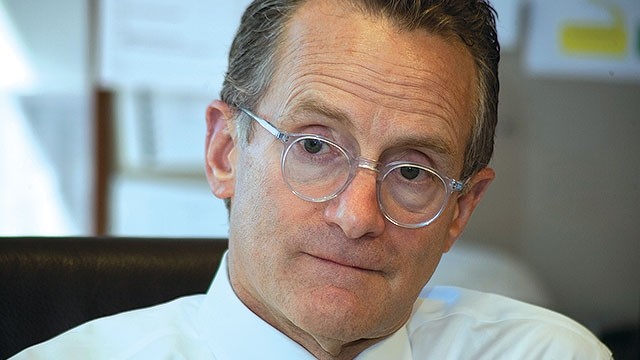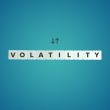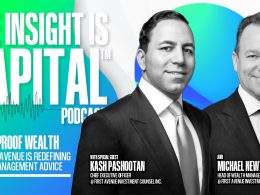When markets feel like they're walking a tightrope, you don’t bet on the breeze—you build a safety net. That’s the spirit behind “Fragile Convictions: Why Mindset Must Trump Markets” 1,2 a candid mid-year check-in from PICTON Investments’ investment and portfolio construction teams.
Yes, the market’s been climbing. But in their view, the optimism driving it might be wearing thin. This isn’t just a outlook—it’s a wake-up call to rethink portfolio construction, decision-making frameworks, and how advisors articulate value in a post-CRM3 world.
Let’s break it down.
PART 1: TENUOUS TAILWINDS — WHEN OPTIMISM OUTPACES REALITY
David Picton gets straight to the point. “There is a chance that things work out very well… but there's also maybe even a greater chance that things don't quite work as well as planned.”
In short: this isn’t a classic bull or bear market. It’s something murkier—an uncertain middle ground where expectations are sky-high and missteps could sting.
Here’s what’s giving him pause:
- U.S. valuations are looking expensive, that isn’t just limited to the tech titans.
- The Fed’s foot is off the gas, shifting from rate cuts to indecision.
- AI’s capital spending boom has cooled, though the “inference phase” could reignite excitement.
- Global flows are tilting away from the U.S., reflecting concerns about fiscal and political stability.
“The recent sharp rally has largely eliminated the margin for error,” Picton cautions, ”especially if momentum starts to fade.”
PART 2: THE REST OF THE WORLD CATCHES UP
If the U.S. party is looking tired, the rest of the world is just getting started.
“There is a resurgence taking place,” Picton says. “The rest of the world has awoken to the fact that the U.S. is a transactional partner… countries are changing the way they do business.”
Notable shifts:
- Central banks abroad are already cutting rates—they’re ahead of the curve.
- China and Europe are exporting deflation, keeping inflation in check globally.
- Canada’s political change is creating real momentum for internal trade reforms.
- Emerging markets are finding new trade routes, no longer reliant on U.S. demand.
As Picton puts it, “New trading relationships are being formed each and every day.”
PART 3: THE FLOW FIZZLE — WHY MARKET SUPPORT MAY BE RUNNING DRY
The rally, they argue, hasn’t been about fundamentals—it’s been all about flow. Retail traders, CTAs, pension plans, hedge funds… they've all piled in.
But here’s the rub: “We might have used up a lot of fuel in the tank.”
According to Picton, most of the systematic and discretionary buyers are already fully in. That means less dry powder to sustain the recent rally.
Meanwhile, the equity risk premium is hovering near its lowest levels in years. Picton lays it out: “If you’re not going to get [relief] on the earnings side… and you may or may not get it on the interest rate side… it leaves us vulnerable to some sort of setbacks in the marketplace.”
And then there’s the elephant in the room: reserve currency risk. The U.S. dollar didn’t rally during recent geopolitical stress—it slipped. “Fooling around with the U.S. reserve currency status… is not without its risks,” Picton points out.
PART 4: FROM FEAR TO FRAMEWORK — HOW TO ACT IN AN UNCERTAIN WORLD
Enter Robert Wilson. His job? Show advisors how to turn macro noise into practical, resilient portfolios.
“We’re arguing for a mindset reset,” Wilson says. “What we’re really asking you to do is to invert your thinking… identify the potential points of failure and then think about how we maximize our upside.”.”
That starts with reframing how we build portfolios. Instead of traditional 60/40, PICTON is leaning on a 40/30/30 model: 40% equities, 30% bonds, and 30% alternatives—with a sharp eye on actual risk, not just asset labels.
“A traditional balanced portfolio might look diversified by label,” Wilson explains. “But 80% of the risk is typically coming from equities. In our Fortified Balanced Portfolio, for example, only about half the risk comes from equity.”
The rest is spread across lower-correlation strategies that don’t get pushed around by every market hiccup.
PART 5: THE COST OF VALUE — WHY CRM3 CHANGES THE FEE GAME
With CRM3 on the horizon, transparency is about to go mainstream. Wilson sees it as a chance for advisors to lead, not scramble.
“The two things that are going to maximize that spending power in retirement are long-term return and avoiding concentrated risk,” he says. “But the way you allocate cost plays a huge role in both.”
His key point? Unbundling matters.
Instead of paying 1% for a traditional active fund where 90% of the return is just beta, why not separate the beta (cheap) from the alpha (valuable)? Use low-cost ETFs for the former and reserve fee budget for truly differentiated skill.
Twenty years ago, 62% of global fee budgets went to long-only active. Today? Just 33%. Alternatives now account for 53%—and climbing.
“It’s not actually a criticism of active management,” Wilson clarifies. “It’s a recognition that unbundling allows you to get more value per unit of cost.”
And in a CRM3 world, the ability to prove that value will separate the modern advisor from the outdated one.
PART 6: THE BEAR ISN’T A CALL — IT’S A STRATEGY
Picton closes with a metaphor that brings it all home: the bear mascot isn’t a market call—it’s a mindset.
“This is not about having a negative view,” he says. “It’s about using the adaptability, strength and resiliency that a bear displays.”
In their view, this isn’t the time for extreme optimism or defensive retreat—it’s time to rethink how portfolios are built and costs are allocated. That’s what “building from the bear up” is all about.
For Advisors, the Path Forward Is Clear:
- Stop forecasting—start fortifying. Build portfolios that work across many futures, not just the rosy ones.
- Know where your risk lives. Labels lie—only actual risk exposure tells the truth.
- Treat fees like fuel. Don’t waste them on generic beta. Spend them where they’ll actually drive performance.
- Make alternatives mainstream. Not just for alpha—but for balance and resilience.
- Educate through CRM3. Transparency isn’t a threat. It’s your new growth engine.
As Wilson says, “This is really the playbook for uncertainty… dial back your biggest risks and allocate into strategies that can deliver value without leaning on the same old levers.”
Footnotes:
1 PICTON Investments. June 25, 2025 Webcast. “Picton Report Mid-Year Update - Fragile Convictions: Why Mindset Must Trump Markets.”
2 "Fragile Convictions: Why Mindset Must Trump Markets Perspectives - The Picton Report." June 2025.














